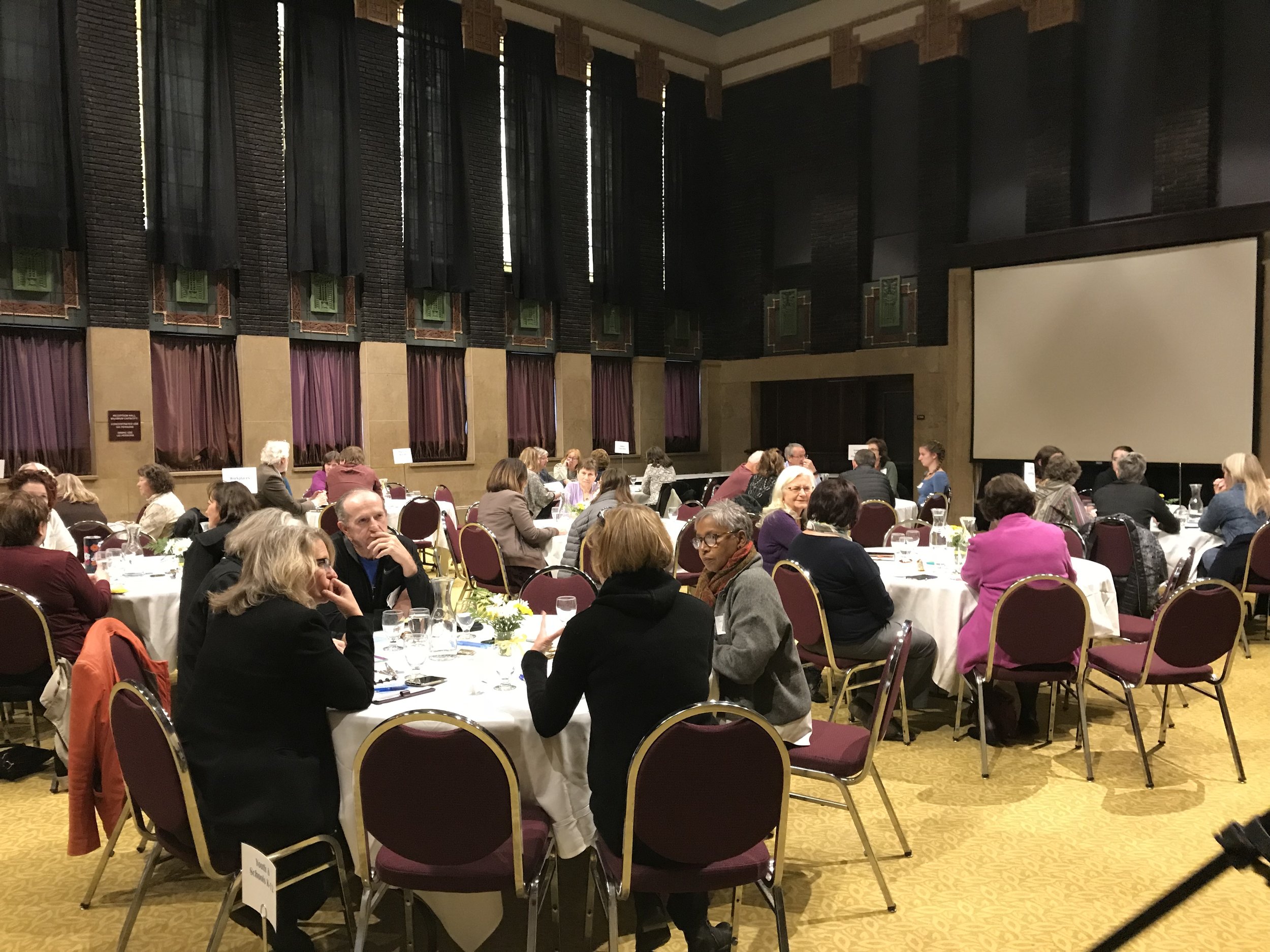Over 70 people gathered to support our national pilot of a Compassionate Community at the 11.2.18 town forum, following a presentation by Professor Allan Kellehear. Thank you all!
Want to be part of the next compassionate community conversation? Please contact: maryann@devanation.com
Voices for Compassion Community Forum - Verizon Reception Hall - Mankato, MN. Nov 2, 2018.
I’d like to address a couple of main questions that came from the group:
Q: Is a compassionate community about end of life or the broader need for compassion in all areas of life?
A: We are viewing compassion for end of life care through the broad lens of all the changes and endings in our life’s journey associated with loss. This includes aging, dying, caring, death and bereavement. It also includes the loss of a job, a dream, a relationship, a country, a culture, an identity or a loss brought on by violence. A compassionate community reaches out to all those who are in crisis or need.
Q: How do we capture the existing compassion to care in our community?
A: One of our vital tasks is to link and leverage the existing resources through an asset mapping process. We will then provide education to the community about existing compassionate services by training “community connectors”. Public awareness of our existing health, social, and community services will be heightened. Gaps in services, as identified by community members, will be created with the support of professionals and citizens working together.
A sampling of the Community Forum discussions:
We are not always great at receiving. The stoic, private culture of Minnesotans allows us to give, be we do not want to get. It’s hard to be compassionate when someone holds you at arm’s length.
We need to change the culture to one that readily gives and receives.
Elders are experiencing one loss after another. How do they process these losses? Can we provide more spiritual and emotional support for elders?
Assisted living places are often close communities – not always wanting to share.
Chaplains could prep the way for families who are grieving; they could also help prep expectations and provide grief education.
Hairstylists know their clients and their families – this would be a good place to converse and support each other.
There is a lack of knowledge about resources. Healthcare professionals and social workers are not aware, families are not aware. How do we connect the dots, access resources and share them?
Grief and loss need more publicity, more stories - get the media involved.
We like the idea of poster campaigns and tool kits.
In schools there is currently a focus on anti-bullying, what if we did bottom up – increase the compassion focus?
Have high school students involved in Death Cafes.
Why can’t we talk about loss (death and dying) ahead of time with our young?
We need to have ‘helping’ become normal for all of us, especially children.
“It is better to listen than to talk” – as part of a grief awareness campaign, education and pamphlets.
We could hold a public health awareness month of grief and loss.
‘Moth’ style storytellers on death.
What does an HR policy look like?
How do you get men involved? How do men share emotions?
Can we use technology in new ways?
Mankato schools could have no homework on Wednesday – an opportunity for compassion programming.
Public campaigns might offer people a nudge or support to reach out – strategies on how we establish relationships with others.
We need tools to start the conversations about helping each other. No one knocks on doors any more. How do we make it okay to reach out?
Encourage people to talk about death experiences. What helped the most? Tell us about what happened.
Let’s focus on the assets and joys that still remain for those who have Alzheimer’s or life-threatening illnesses.
Assisted living places are often closed communities – not always wanting to share.
How can we come together at the University to build community?
